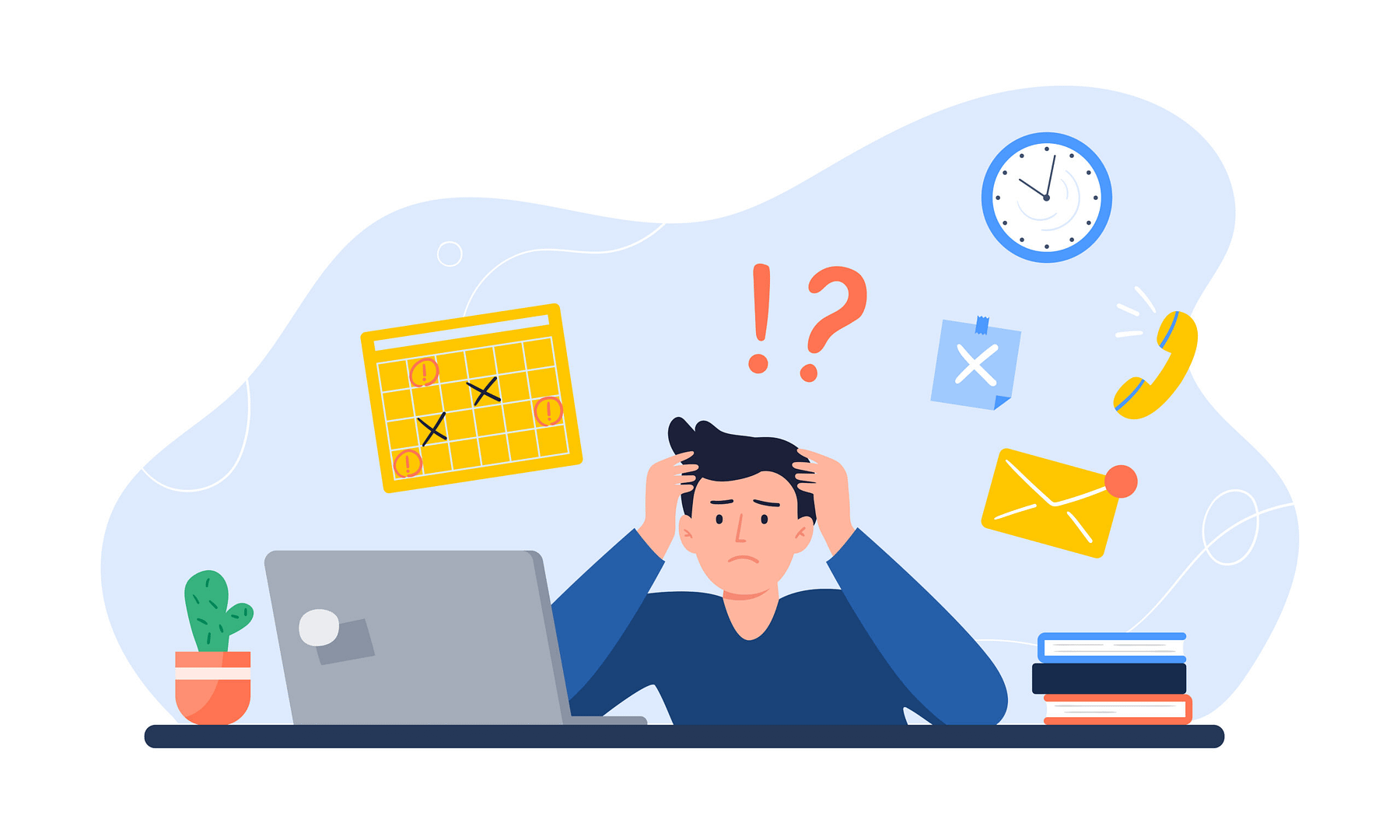ADHD Paralysis: Why You Feel Stuck and Can’t Start Tasks
You know that feeling when you have a million things to do, but you can’t seem to start any of them? You’re sitting there, fully aware of what needs to get done, maybe even feeling increasingly anxious about it, but your brain just won’t cooperate. It’s not laziness, and it’s not a character flaw. If you have ADHD, what you’re experiencing might be ADHD paralysis, and it’s one of the most frustrating symptoms that people don’t always talk about.
At Mile High Psychiatry, we work with adults who describe this experience all the time: “I want to do the thing, I know I need to do the thing, but I literally cannot make myself start.” If that resonates with you, you’re definitely not alone.

What Is ADHD Paralysis?
ADHD paralysis, sometimes called “analysis paralysis” or “task paralysis,” is that overwhelming sense of being mentally frozen when faced with tasks or decisions. It’s not an official clinical term, but it’s become widely recognized in the ADHD community because it captures something very specific that many people with ADHD experience regularly.
Here’s what makes ADHD paralysis different from regular procrastination: you genuinely want to complete the task, you understand it’s important, and you might even feel stressed or anxious about not doing it. But despite all that motivation and awareness, you remain completely stuck. Your brain feels like it’s spinning its wheels without gaining any traction.

This paralysis can show up with any type of task, from responding to an important email to starting a major project at work, from doing the dishes to making a phone call you’ve been putting off for weeks. The size of the task doesn’t always correlate with how stuck you feel, which can make the whole experience even more confusing and frustrating.
Why Does ADHD Paralysis Happen?
The “why” behind ADHD paralysis isn’t about willpower or caring enough. It’s about how ADHD affects your brain’s executive function.
Executive Dysfunction
This is at the heart of ADHD paralysis. Executive functions are the mental processes that help us plan, organize, start tasks, manage time, and see things through to completion. When you have ADHD, these functions don’t work as smoothly as they should.
It’s like having a high-performance engine with a faulty transmission. The power is there, but getting it to actually move you forward is the challenge.
Lower Dopamine Levels
Dopamine and motivation play a huge role, too. ADHD brains have lower baseline levels of dopamine, the neurotransmitter that helps regulate motivation and reward. Your brain is constantly seeking stimulation and reward, which is why you might be able to hyperfocus on something interesting for hours but can’t make yourself start that boring-but-necessary task.
When a task doesn’t provide immediate interest or reward, your brain essentially says “no thanks” and refuses to engage, even when you consciously want to do it.
Feeling Overwhelmed
When a task feels too big, too complicated, or when you’re facing too many choices about how to approach it, your brain can essentially short-circuit. Instead of picking one starting point, you end up frozen, unable to choose any option at all.
Common Triggers for ADHD Paralysis
Recognizing what tends to trigger your ADHD paralysis can help you develop strategies to work around it. While everyone’s experience is a bit different, some common triggers include:
- Tasks without clear structure are major culprits. When something is vague or open-ended, like “work on the project” or “clean the house,” your ADHD brain doesn’t know where to start. The lack of a clear entry point creates that stuck feeling.
- Too many options can be just as paralyzing as no options. When you’re trying to decide which task to start first, or which approach to take, the decision-making process itself can eat up all your mental energy, leaving nothing left to actually do the task.
- Tasks that feel boring or unrewarding are classic ADHD paralysis triggers. Your brain is essentially on strike, refusing to engage with something that doesn’t provide enough stimulation or immediate payoff. This is why you might be able to redesign your entire room on a whim, but can’t bring yourself to file your taxes.
- Perfectionism and fear of failure create paralysis, too. When you’re worried about doing something wrong or not doing it perfectly, the anxiety can freeze you in place. The thought process becomes “if I don’t start, I can’t fail,” even though you know logically that not starting is its own kind of failure.
- Emotional overwhelm from stress, anxiety, or even excitement can contribute to task paralysis. When your emotional state is already running high, adding the demand of starting a task can push you over the edge into complete shutdown mode.
How ADHD Paralysis Affects Daily Life
Failing to Complete Tasks
Many people with ADHD paralysis describe feeling like they’re constantly letting people down, including themselves. You might miss deadlines at work, forget to respond to friends’ messages, or leave household tasks undone for days or weeks. The guilt and shame that build up can become overwhelming, which ironically makes the paralysis even worse.
Hits to Self-esteem
When you can’t make yourself do things that seem simple to others, it’s easy to internalize that as something being wrong with you. You might call yourself lazy, unmotivated, or incapable, even though none of those labels are accurate.
Relationships Can Suffer
Partners, family members, or roommates might not understand why you can’t just do the things you say you’re going to do. They might interpret your paralysis as not caring or not trying hard enough, which isn’t true but can be hard to explain.
Anxiety Triggers
The anxiety that comes with ADHD paralysis can also create a vicious cycle. You’re anxious about the tasks you’re not doing, which makes it harder to start them, which makes you more anxious. Before you know it, you’re stuck in a pattern that feels impossible to break.

Practical Strategies to Overcome ADHD Paralysis
The good news is that while ADHD paralysis is real and challenging, there are concrete strategies that can help. These aren’t about magically fixing your ADHD or forcing yourself to “just do it.” They’re about working with your brain instead of against it.
1. Break Tasks Into Ridiculously Small Steps
- Instead of “clean the kitchen,” try “put three dishes in the dishwasher.”
- The smaller the step, the less overwhelming it feels, and the easier it is to start.
- Once you start, momentum often carries you further than you expected.
2. Use the “Just Five Minutes” Rule
- Tell yourself you only have to work on something for five minutes.
- Set a timer if that helps.
- Often, starting is the hardest part, and once you’re five minutes in, continuing feels more manageable.
- If you still want to stop after five minutes, that’s okay too. You’ve still made progress.
3. Creative External Structure and Deadline
- Since your internal structure isn’t working great, borrow some external structure.
- Body doubling, where you work alongside someone else (even virtually), can be incredibly helpful.
- Having someone else present creates gentle accountability and helps your brain stay engaged.
4. Reduce Decisions
- When you’re feeling paralyzed, the last thing you need is more choices.
- Create simple routines, use lists that prioritize tasks for you, or have a friend help you decide where to start.
- The fewer decisions you have to make, the more energy you have for actually doing things.
5. Make Tasks More Interesting
- Listen to music, work in a coffee shop, use a reward system, or turn the task into a game.
- Anything that increases the stimulation or reward factor can help your brain engage more easily.
6. Address Perfectionism
- Remind yourself that done is better than perfect.
- Set a timer and commit to working messily and imperfectly.
- Sometimes giving yourself permission to do a mediocre job is exactly what you need to actually start.
Professional Support for ADHD Paralysis
While self-help strategies can make a real difference, sometimes you need more comprehensive support. If ADHD paralysis is significantly impacting your work, relationships, or quality of life, reaching out to a mental health provider who specializes in ADHD can be a game-changer.
At Mile High Psychiatry, we understand that ADHD paralysis isn’t about motivation or trying harder. It’s about how your brain is wired and finding strategies and treatments that actually work for you. This might include medication, therapy, and personalized coping strategies.
If you’re struggling with ADHD paralysis and feeling stuck more often than not, you don’t have to figure it all out alone. Request an appointment with Mile High Psychiatry today.


